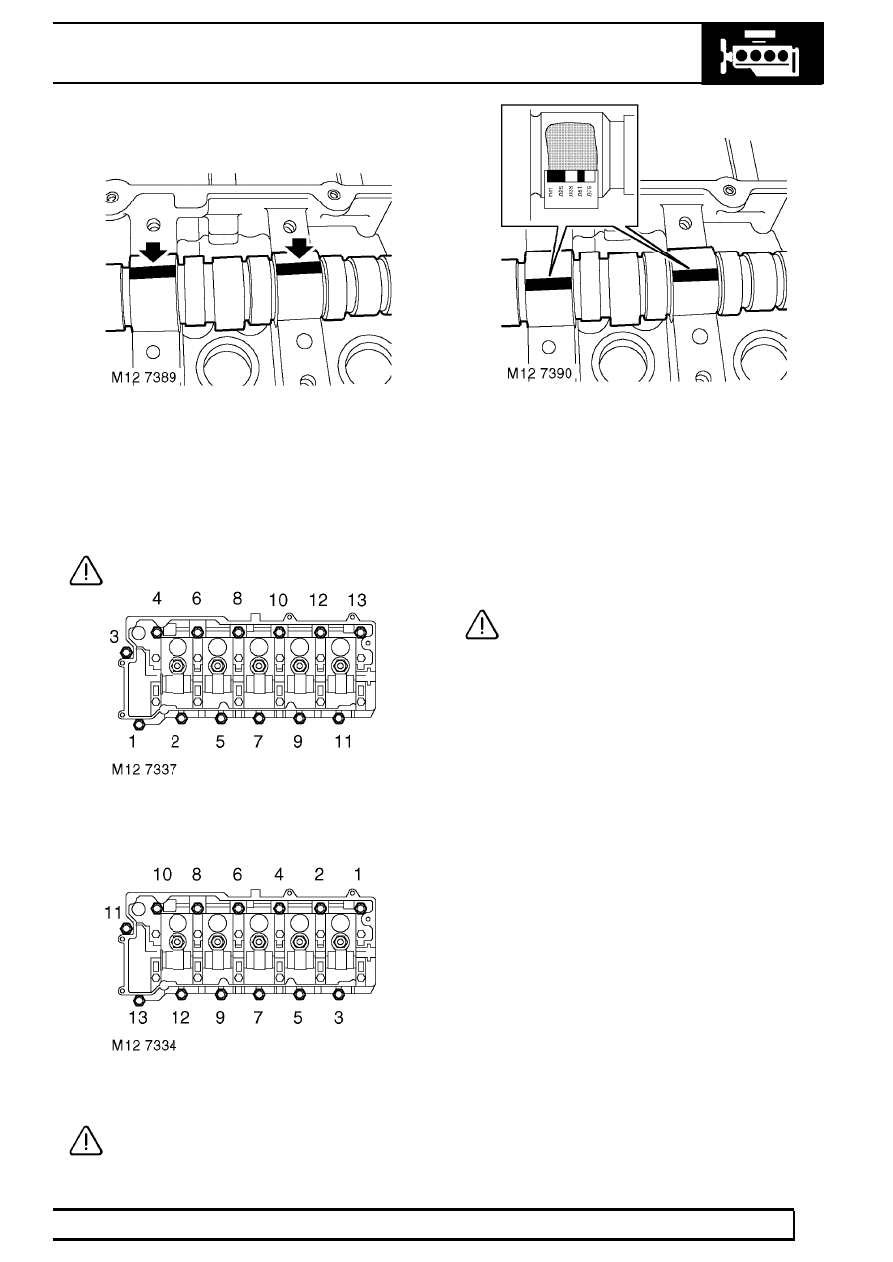Defender (1999-2002). Manual - part 39

ENGINE
13
OVERHAUL
Camshaft bearings - check clearance
1. Position camshaft in cylinder head.
2. Place a piece of Plastigage along the centre line
of each camshaft bearing journal.
3. Carefully fit the camshaft carrier ensuring it is
located on dowels.
CAUTION: Do not rotate camshaft.
4. Fit original camshaft carrier retaining bolts and
tighten in sequence shown to 25 Nm (18 lbf.ft) .
5. Using sequence shown, loosen then remove
camshaft carrier retaining bolts.
CAUTION: Do not discard bolts at this
stage.
6. Carefully remove camshaft carrier.
7. Measure and record widest portion of Plastigage
on each camshaft bearing journal.
8. Compare figures obtained with camshaft bearing
clearance.
Camshaft bearing clearance = 0.04 to 0.10
mm (0.002 to 0.004 in).
9. If any bearing clearance is found to exceed
figures given, repeat the above procedure using
a new camshaft.
CAUTION: If, after repeating the bearing
clearance check with a new camshaft the
bearing clearances are still excessive, a
new cylinder head and camshaft carrier assembly
must be fitted.
10. Remove all traces of Plastigage using an oily
cloth, do not use a scraper.
11. Discard camshaft carrier bolts.